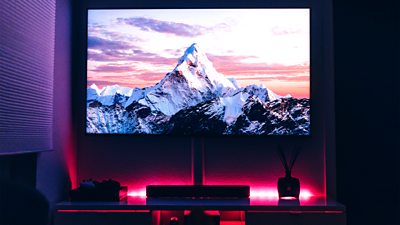
Earlier in the year my colleague Alana Boles undertook an Ambient Lighting Survey to help us understand the conditions in which our audiences view our output. When initially designing , experiments were undertaken to understand how the tonal curve of for different screen capabilities and ambient viewing conditions.
This new survey now allows us to quantify the range of ambient viewing conditions seen in home viewing environments and hence, the range of adjustment needed. The two key findings are:
- Televisions should ideally be able to adjust to surround lighting conditions over a range from below 5 lux to at least 250 lux;
- Televisions should measure illumination reflected from the wall behind the screen and incident light falling on the screen to correctly adjust both black level offset and the display’s tonal curve (also known as the transfer function or “gamma”).
The viewing survey was undertaken by 158 people from a range of locations across the globe. A further 520 people opened the poll and answered some questions but did not undertake the required measurements, possibly due to the complexity of the method. We asked participants to list their nearest large town or city and used a publicly available API to convert this into latitude and longitude data.
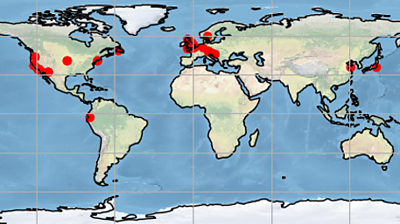
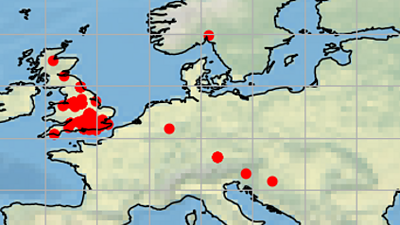
All responses received for measurements were taken between 8am and 11pm (local time) with the majority watching in the living room.
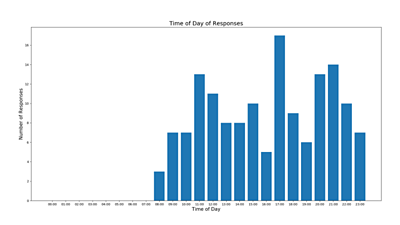

The graph shows that the difference between the average measurements for day and the evening or night is large. The small night error bars suggest that lighting levels are fairly consistent across viewers.
We then looked at other factors which may raise or lower the luminance measurement.
Latitude
We had hoped to see if there was a measurable correlation between latitude and ambient lighting, but we did not get a good enough geographical spread of respondents to make any statistically significant claims.
Outdoor viewing
Whilst this survey was aimed at television viewing in the home, we did get some respondents watching on mobile telephones. Again, not enough to make any statistically significant claims, but we would note that the range of ambient illumination watching outside far exceeds the ranges presented here, with one measurement of over 4500 lux.
Television orientation
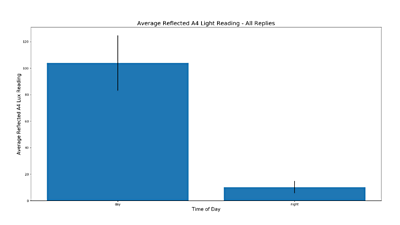
To categorise times of day into Day and Night, we used the times of sunrise and sunset. We defined Night as when the Sun’s elevation was below the horizon and Day as when it was above. Time categories were calculated assuming a date of June 21st in London, UK.
Measurement method
The primary reflected light measurement was taken from a piece of plain A4 printer paper, thereby removing any variability due to wall coverings. We used standard techniques to and .
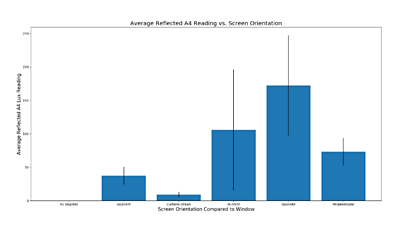
The orientation of the television with respect to the window has a great effect on the measured luminance. As expected, placing the television opposite the window significantly raises the ambient illumination whilst using curtains or blinds significantly reduces this. Wide error bars are seen on the graph where there are few respondents – for example, not many replies indicated that they had a television in front of or directly opposite to the window.
Weather conditions
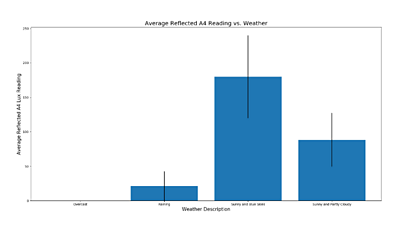
Similarly, the weather conditions greatly affect the amount of light illuminating the viewer’s environment.
Effect of wallcoverings
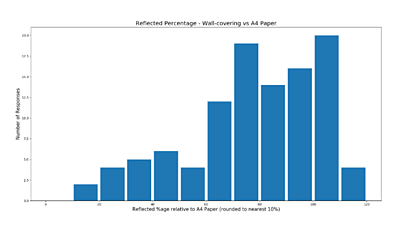
We also asked the respondents to measure the light reflected from the wall surrounding the television, this allows us to estimate the reflectance of wall coverings (shown here rounded to the nearest 10% reflectance). Some measurements were greater than the A4 paper indicating a higher reflectance wall covering.
The luminance of the television surround (which is proportional to the illumination and wallcovering reflectance) is known to have a in a television image. It is also known that (known as the “brightness adjustment”) required. The broad range of wallcovering reflectances found in our survey, suggests that television manufacturers may need to have both front- and rear-facing light sensors, to optimally display television images.
Conclusions
As expected, there is a correlation between ambient lighting levels and:
- time of day,
- weather,
- use of window coverings, and
- orientation of television with respect to the window.
We do not have enough data to confirm any correlation with latitude.
- From the data for indoor viewing, we show that televisions need to be able to adjust to surround lighting conditions over a range from below 5 lux to at least 250 lux. that this adjustment will need to change the display’s black level offset and transfer function to ensure viewers’ perception matches the production team’s intent.
- Because there is a large range of wall covering reflectances, televisions should measure illumination reflected from the wall and incident light to correctly make these adjustments.
- Outdoor viewing will require adjustments for a far larger range of lighting conditions. Further work may be required to quantify this extended range.
